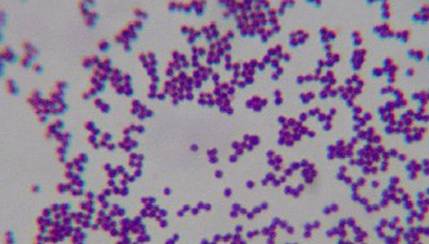

Gram-positive uropathogens were reported in multiple countries in both uncomplicated and complicated UTI. Most prevalent gram-positive uropathogenic bacteria include Staphylococcus saprophyticus and Enterococcus facecalis. The remaining proportions are associated with a variety of organisms, including the Gram-positive bacteria Staphylococcus saprophyticus, Enterococcus faecalis, Streptococcus agalactiae (group B Streptococcus, GBS), and other less frequently isolated organisms. The major causative agents of UTIs are Escherichia coli and other Enterobacteriaceae. Urinary tract infection (UTI) is one of the most common infectious diseases. Uropathogen, UTI, antimicrobial resistance, empirical treatment, Bangladesh AbbreviationsĪPI: Analytic Profile Index CLSI: Clinical and Laboratory Standards Institute CLED: Cysteine Lactose Electrolyte Deficient Agar MDR: Multi Drug Resistant MHA: Muller Hinton Agar PBS: Phosphate Buffered Saline UTI: Urinary Tract Infection Introduction Findings of the study could help in prescribing antibiotics from this evidence-based study. In contrast, nitrofurantoin was found the most ineffective drug in this study. Antibiogram analyses showed amikacin and gentamicin as the most effective antibiotics against our tested isolates. Further studies with more sample sizes can warrant the preliminary findings. Unlikely, our findings look males are equally vulnerable by gram-positive in comparison to females. Most of the earlier publication shows that female is more vulnerable to gram-negative UTI bacteria. Male and female were found to be infected equally by gram-positive UTI pathogens. The prevalence shows the harmony with the earlier published reports. This study has detected 8.2% of gram-positive bacteria in UTI patients. We aimed to seek in this gap-filling research area. Very limited studies are available focusing etiology and their antibiotic susceptibilities in Bangladesh perspective. Without proper diagnosis, there is a high possibility of getting the wrong diagnosis and subsequent antibiotic therapy. However, symptoms associated with UTI caused by gram-positive and gram-negative are very similar. Antibiotic therapy of gram-positive bacteria is completely different than that of gram-negative UTI pathogens. Gram-positive pathogens were reported in multiple countries in both uncomplicated and complicated UTI. The major gram-positive bacteria in UTI cases are Staphylococcus saprophyticus, Enterococcus faecalis, Streptococcus agalactiae. Enterobacteriaceae was found to be the most prevalent UTI infection constituting more than 80% of all the reported cases. Most UTI research focuses on gram-negative etiology. Laboratory diagnosis of both genera is usually performed by microscopy, culture and in some cases molecular techniques.Urinary tract infection (UTI) is a global problem.


Both species of the genus Enterococcus have intrinsic resistance to some antimicrobials, mainly cephalosporins, aminoglycosides, clindamycin and trimethoprim-sulfamethoxazole. They can cause infections such as bacteremia, endocarditis, urinary tract infection or skin-related infections. Most infections are caused by two species: Enterococcus faecalis and Enterococcus faecium.

The genus Enterococcus comprises a group of microorganisms of great relevance due to their role as the main causative agents of healthcare-associated infections. Las especies patógenas más importantes de este género son S. Some species of the genus Streptococcus are important human pathogens, although most are commensal and belong to the normal microbiota of human skin. Most species are facultative anaerobes, and some grow only in an atmosphere enriched with carbon dioxide. The genus Streptococcus and Enterococcus are a group consisting of a various Gram-positive cocci that are usually arranged in pairs or chairs.


 0 kommentar(er)
0 kommentar(er)
